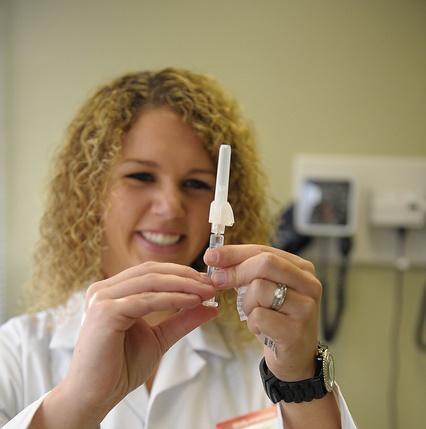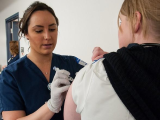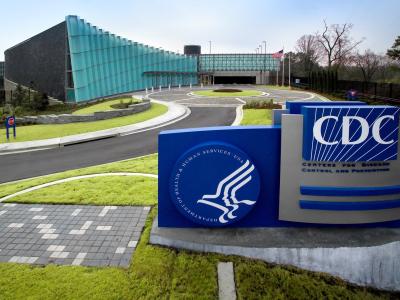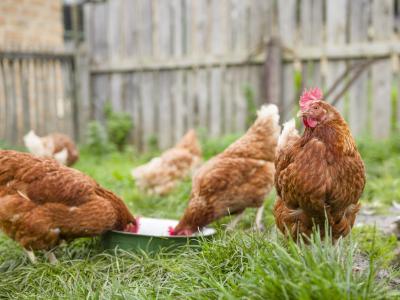In a precursor to what we might expect in the coming flu season in the United States and across the Northern Hemisphere, a new study shows flu vaccine effectiveness (VE) to be around 50% for both clinic visits and hospital stays for influenza during the 2025 Southern Hemisphere flu season.
The findings, which demonstrate that the vaccine cuts the rate of medical care for flu in half, were published recently in Morbidity and Mortality Weekly Report by researchers with the US Centers for Disease Control and Prevention (CDC), the Pan American Health Organization, and their collaborators in Southern Hemisphere nations.
"CDC recommends that all eligible persons aged ≥6 months receive the seasonal influenza vaccine," the authors note. "The 2025–26 Northern Hemisphere seasonal influenza vaccine composition is the same as that used during the 2025 Southern Hemisphere influenza season and might be similarly effective if the same viruses circulate in the coming season."
Protection similar across several subgroups
The investigators identified patients with influenza-like illness (ILI) in outpatient settings and those with severe acute respiratory infection (SARI) admitted to a hospital in one of eight countries: Argentina, Australia, Brazil, Chile, New Zealand, Paraguay, South Africa, and Uruguay. The patient data were collected in sentinel surveillance systems, which can alert scientists to disease trends. They used a test-negative case-control study design to estimate VE.
Included in the study were 2,122 patients with ILI and 42,752 patients with SARI. Among them, 563 (26.5%) with ILI and 17,787 (41.6%) with SARI had influenza confirmed by polymerase chain reaction testing. Virus strain was influenza A in 82.4% of the ILI patients and 94.9% of the SARI patients. Overall, 21.3% of patients with ILI and 15.9% of patients with SARI had received a flu vaccine.
Among patients with ILI, adjusted VE against influenza-associated outpatient illness with any influenza virus was 50.4% (95% confidence interval [CI], 33.2% to 63.2%). VE against any influenza A was 45.4%, against the H1N1 strain it was 53.3%, and against any influenza B virus it was 62.3%. Among patients in the priority vaccination groups, VE against influenza-associated outpatient illness with any influenza virus was 51.8% (95% CI, 27.9% to 67.7%).
The 2025–26 Northern Hemisphere seasonal influenza vaccine composition is the same as that used during the 2025 Southern Hemisphere influenza season and might be similarly effective.
Among patients with SARI, adjusted VE against influenza-associated hospitalization with any influenza virus was 49.7% (95% CI, 46,3% to 52.8%). VE was 46.1% against influenza A, 41.6% against H1N1, and 37.2% against the H3N2 strain, which is also an "A" strain. Adjusted VE against influenza B viruses was 77.6%. Among patients in the priority vaccination groups, VE against flu-related hospitalization with any influenza virus was 45.7% (95% CI, 41.8% to 49.3%).
VE was 51.3% against hospitalization in young children, 51.9% among people with underlying conditions, and 37.7% in older adults (60 and older or 65 and older, depending on the country).
Support for CDC recommendations
"Findings from this evaluation suggest that the 2025 seasonal influenza vaccines reduced influenza-associated outpatient visits and hospitalization by an estimated one half in eight Southern Hemisphere countries," the authors conclude. "These estimates are similar to interim VE estimates from the 2024–25 Northern Hemisphere season against illness from any influenza virus in an outpatient (40%–56%) and hospital (34%–52%) setting."
They add, "Influenza vaccination provides important protection from influenza illness and associated potential complications. Despite this, 21% of patients with ILI and 16% of patients with SARI in this population had received the 2025 influenza vaccine."
The authors point to another important tool to combat flu: "To add to mitigation efforts against severe illness in the coming season, health care providers can recommend the use of antivirals, where available, for patients with suspected or confirmed influenza."
They conclude, "These findings support CDC's recommendations for all eligible persons aged ≥6 months to receive a seasonal influenza vaccine before the start of the Northern Hemisphere influenza season."




















